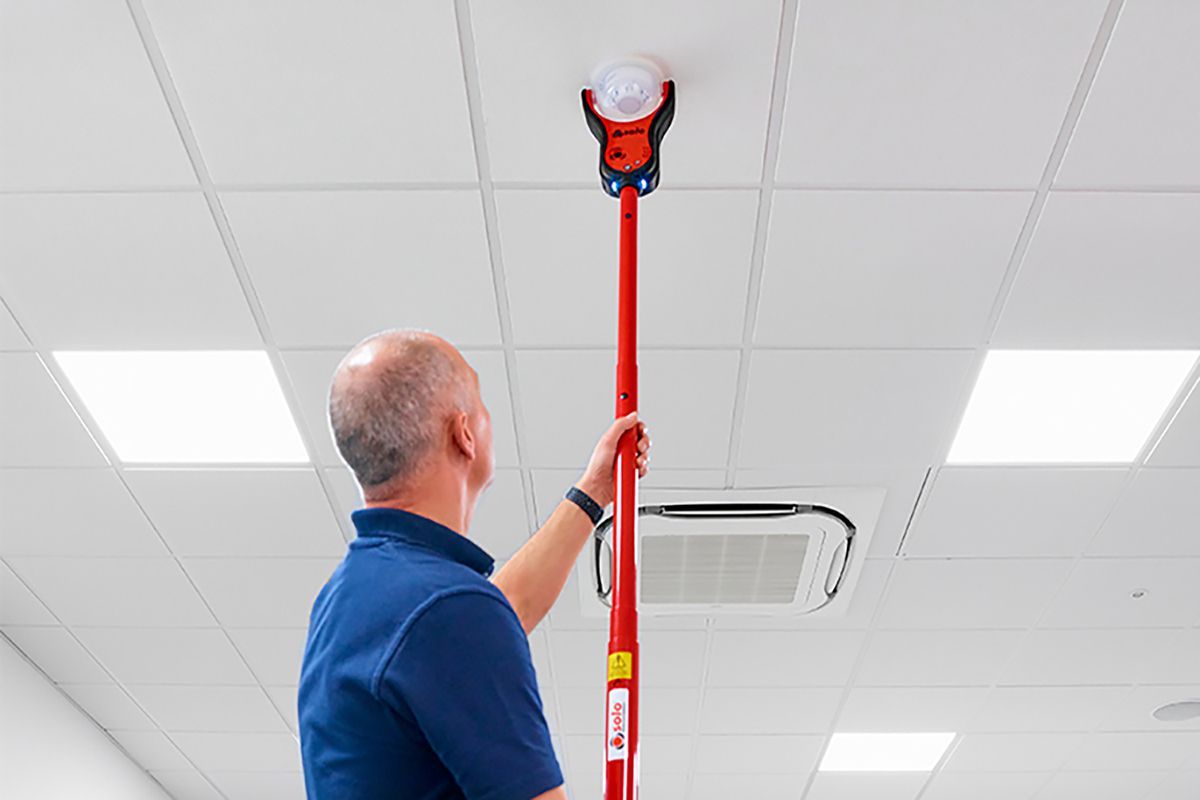

Articles
How To Test A Smoke Detector
Modified: February 24, 2024
Learn how to test a smoke detector with this informative article. Ensure your safety by regularly checking your smoke alarm's functionality.
(Many of the links in this article redirect to a specific reviewed product. Your purchase of these products through affiliate links helps to generate commission for Storables.com, at no extra cost. Learn more)
Introduction
Welcome to our comprehensive guide on how to test a smoke detector. Smoke detectors are crucial safety devices that can potentially save lives in the event of a fire. However, they need to be regularly tested and maintained to ensure that they are functioning properly. In this article, we will walk you through the step-by-step process of testing a smoke detector, as well as provide you with valuable tips and insights to keep your home safe.
Before we delve into the details, let’s take a moment to understand the importance of smoke detectors. These small devices are designed to detect smoke particles in the air, which may indicate the presence of a fire even before it becomes visible or poses a significant threat. By promptly alerting residents to the potential danger, smoke detectors provide precious moments to evacuate the building or take necessary precautions.
Testing your smoke detector regularly is essential to ensure that it is functioning correctly. Over time, dust, debris, or even a dead battery can hinder the device’s performance. By following the steps outlined in this guide, you can determine whether your smoke detector is in proper working order and address any issues promptly.
It is worth mentioning that while this guide covers the basic process of testing a smoke detector, it is essential to refer to the manufacturer’s instructions specific to your device. Different models may have slight variations in the testing process, so it’s always best to consult the user manual to ensure accurate testing and maintenance.
So, let’s not waste any more time. Grab your safety gear, gather your equipment, and let’s get started with testing your smoke detector to ensure optimal performance and your family’s safety.
Key Takeaways:
- Regularly testing and maintaining your smoke detector is crucial for early fire detection and timely evacuation. Follow the step-by-step process outlined in this guide to ensure your smoke detector is in optimal condition and ready to protect against potential fire hazards.
- Document and record the results of your smoke detector tests to track its performance over time. This detailed record will help you address any issues promptly and maintain the safety of your home or building.
Read more: How Often Should I Test My Smoke Detector
Understanding the Basics of a Smoke Detector
Before we dive into the process of testing a smoke detector, it’s important to have a basic understanding of how these devices work. A smoke detector is a small electronic device that is designed to detect smoke particles in the air. It consists of a sensing chamber, a loud alarm, and a power source.
The sensing chamber is the heart of the smoke detector. It contains a small amount of a radioactive material, such as Americium-241, which releases ionizing radiation. When smoke enters the chamber, it disrupts the flow of ions, triggering the alarm. The loud alarm is typically a high-pitched sound that alerts occupants of a potential fire.
Smoke detectors are powered either by batteries or by being directly connected to the electrical system of a building. Battery-powered smoke detectors are more common in residential properties, while hardwired detectors are often found in commercial buildings.
It’s important to note that smoke detectors should not be confused with heat detectors or carbon monoxide detectors. Heat detectors, as the name suggests, detect excessive heat caused by a fire. Carbon monoxide detectors, on the other hand, monitor the presence of the odorless and colorless gas that is produced by incomplete combustion of fuels.
Now that we have a basic understanding of smoke detectors, let’s move on to the next section, where we will discuss the necessary equipment you’ll need to effectively test your smoke detector.
Gathering the Necessary Equipment
Before you begin testing your smoke detector, it’s essential to gather the necessary equipment. Having the right tools and materials will not only make the testing process smoother but also ensure accurate results. Here’s a list of items you’ll need:
- Batteries: If your smoke detector is battery-powered, make sure you have fresh batteries on hand. It’s always a good idea to replace the batteries in your smoke detector during the testing process to ensure optimal performance.
- Ladder: Depending on the location of your smoke detector, you may need a ladder to reach it safely. Ensure that the ladder is stable and secure before climbing up.
- Non-flammable aerosol spray: You’ll need a non-flammable aerosol spray, such as canned smoke or smoke detector tester, to simulate smoke and trigger the alarm.
- Cloth or duster: Over time, dust and debris can accumulate inside the smoke detector, affecting its functionality. Having a cloth or duster will allow you to clean the device if needed.
- Notebook or recording device: It’s important to document and record the results of your smoke detector test. Keep a notebook handy or use a recording device to note any issues or observations you come across during the testing process.
Make sure you have all the necessary equipment prepared before you start testing your smoke detector. This will help you save time and ensure that you can complete the testing process efficiently.
Now that you’re equipped with the necessary materials, it’s time to move on to the next section, where we will walk you through the step-by-step process of testing your smoke detector.
Step 1: Checking the Power Source
The first step in testing your smoke detector is to ensure that it has a reliable power source. Depending on the type of smoke detector you have, this could involve checking the battery or verifying the electrical connection.
If your smoke detector is powered by batteries, start by removing the device from its mounting bracket. Look for the battery compartment and check if the battery is properly installed. If the battery is old or weak, replace it with a fresh one.
Ensure that the battery contacts are clean and free of any corrosion. If you notice any buildup, gently clean the contacts using a cloth or a cotton swab dipped in vinegar or rubbing alcohol. This will ensure a solid connection between the battery and the detector.
If your smoke detector is hardwired, meaning it is connected to the electrical system of your home, make sure that the power is turned on. Check the circuit breaker or fuse box to ensure that the circuit controlling the smoke detector is not tripped or turned off. If necessary, reset the breaker or replace the fuse to restore power to the smoke detector.
It’s important to note that some smoke detectors have both battery backup and electrical power options. In this case, ensure that both the battery and the power source are in working order.
Once you have confirmed that the power source is reliable, reattach the smoke detector to its mounting bracket securely. Make sure it is level and firmly in place. This will facilitate accurate testing and prevent false alarms during the process.
With the power source checked and confirmed, it’s time to move on to the next step: testing the alarm sound. Proceed to the next section to learn how to do it effectively.
Step 2: Testing the Alarm Sound
Now that you have ensured that your smoke detector has a reliable power source, it’s time to test the alarm sound. This step will help you determine if the alarm is loud enough to alert occupants in the event of a fire.
Start by pressing the test button on the smoke detector. This button is typically located on the front or side of the device and is labeled “Test” or “Test/Silence.” Hold it down for a few seconds until you hear the alarm sound.
Listen carefully to the alarm and assess its volume. If the alarm sound is weak or barely audible, there may be an issue with the device. In this case, check the battery or power source again to ensure that it is functioning correctly. If you have replaced the battery or restored power, try testing the alarm sound again.
If the alarm sound is still weak or non-existent, it may be necessary to clean the smoke detector to remove any dust or debris that could be affecting its performance. Use a cloth or duster to gently clean the exterior of the device. Avoid using water or cleaning agents, as they could damage the sensitive components of the smoke detector.
If cleaning the smoke detector doesn’t improve the alarm sound, it may be time to replace the device. Smoke detectors have a limited lifespan, typically around 10 years before they need to be replaced. Refer to the manufacturer’s instructions or consult with a professional to determine the appropriate replacement for your specific model.
Remember, a loud and clear alarm sound is crucial for an effective smoke detector. Do not overlook this step, as it could potentially save lives in an emergency situation.
With the alarm sound tested and confirmed, let’s move on to the next step: testing the sensor. Continue reading to learn how to do it properly.
Read more: How To Smoke In A Room With A Smoke Detector
Step 3: Testing the Sensor
Testing the sensor of your smoke detector is an important step to ensure that it can accurately detect smoke particles in the air. This step will help you assess the responsiveness and sensitivity of the sensor, ultimately determining the detector’s effectiveness in detecting fires.
To begin, create smoke to simulate a fire and see if the smoke detector reacts accordingly. You can use a non-flammable aerosol spray, such as canned smoke or a smoke detector tester, specifically designed for this purpose. Follow the manufacturer’s instructions on how to use the spray effectively.
Hold the spray about 2-3 feet away from the smoke detector and release a short burst of the aerosol spray. The spray should enter the smoke detector’s sensing chamber and trigger the alarm sound. If the smoke detector doesn’t respond immediately, wait for a few seconds to allow the particles to reach the sensor before determining the effectiveness of the detector.
If the alarm is not triggered after releasing the aerosol spray, there may be an issue with the sensor. In such cases, check for any visible obstruction around the sensing chamber, such as dust or debris, and remove it carefully using a cloth or duster. This cleaning process will help ensure that the smoke particles can easily enter the chamber and activate the sensor.
If the sensor still fails to respond after cleaning, it may indicate a malfunctioning smoke detector. In this case, consider replacing the device to maintain the safety of your home or building.
Keep in mind that, during the testing process, it is crucial to remain calm and composed. Test the sensor in controlled conditions and avoid creating excessive smoke that could trigger false alarms or cause unnecessary panic.
Now that you have tested the sensor, it’s time to move on to the next step: inspecting and cleaning the smoke detector. Continue reading to learn how to do it correctly.
Test your smoke detector by pressing and holding the test button until the alarm sounds. If it doesn’t sound, replace the batteries and try again. Test your smoke detector at least once a month.
Step 4: Inspecting and Cleaning the Smoke Detector
Inspecting and cleaning your smoke detector is an important step in ensuring its proper functioning. Over time, dust, debris, and even insects can accumulate inside the device, potentially affecting its performance. Regular cleaning and maintenance will help keep your smoke detector in optimal condition.
Start by removing the smoke detector from its mounting bracket. Carefully disconnect any electrical connections if applicable. Take a moment to inspect the exterior of the device for any visible signs of damage, such as cracks or discoloration. If you notice any damage, it’s important to replace the smoke detector immediately for reliable fire detection.
Next, inspect the interior of the smoke detector. Look for any dust or debris that may have accumulated on the sensor or other components. Use a cloth or a soft brush to gently clean the interior, being careful not to cause any damage to the sensitive parts of the device.
If you find stubborn dirt or debris that cannot be easily removed, consider using compressed air to blow away the particles. However, exercise caution when using compressed air to avoid applying too much pressure, as it can damage the smoke detector.
While cleaning the smoke detector, pay attention to the vents or openings on the device. Make sure they are not blocked or obstructed, as this can prevent smoke particles from entering the sensing chamber. Use a cloth or duster to wipe away any dirt or blockages in these areas.
Once you have cleaned the smoke detector thoroughly, reassemble the device and securely reattach it to its mounting bracket. Ensure that it is level and properly aligned.
Regularly inspecting and cleaning your smoke detector will help maintain its effectiveness in detecting smoke and triggering timely alarms. It’s recommended to clean the device at least once every six months or more frequently if you notice excessive dust or debris accumulation.
With the smoke detector inspected and cleaned, let’s move on to the next step: resetting the smoke detector. Continue reading to learn how to do it correctly.
Step 5: Resetting the Smoke Detector
Resetting your smoke detector is an important step after testing and cleaning the device. This process helps ensure that any changes made during testing or maintenance are properly saved and applied. Additionally, it allows the smoke detector to recalibrate and prepare for future detection.
To reset your smoke detector, start by referring to the manufacturer’s instructions specific to your device. Different models may have slight variations in the reset process, so it’s important to follow the guidelines provided to ensure accurate resetting.
Typically, the reset button is located on the front or side of the smoke detector. It is usually labeled “Reset” or “Reset/Silence.” Press and hold the reset button for a few seconds until you hear a beep or see a visual indicator confirming that the reset process is complete.
After resetting the smoke detector, it will go through a self-testing phase. During this period, the device will activate its internal components, sound a brief alarm, and ensure that all systems are functioning correctly. This self-testing phase usually takes a few seconds and is a normal part of the reset process.
Once the smoke detector has completed its self-testing and has reset successfully, it’s essential to check the battery or power source again to ensure that it is still properly connected or has been replaced if necessary.
Remember, resetting your smoke detector ensures that it is ready to detect smoke and respond appropriately in the event of a fire. Make it a habit to reset the device after each testing session or maintenance activity.
With the smoke detector properly reset, let’s move on to the final step: documenting and recording the test results. Continue reading to learn why this step is crucial.
Step 6: Documenting and Recording the Test Results
Documenting and recording the results of your smoke detector test is a crucial step in maintaining the safety of your home or building. By keeping a record of the test results, you can track the performance of your smoke detector over time and address any issues promptly.
Start by using a notebook or recording device specifically dedicated to smoke detector testing. Create a log where you can record the date of the test, the specific steps taken during the testing process, and any observations or issues that arise.
When documenting the test results, be sure to include the following information:
- Date: Write down the date of the test. This will help you keep track of when the last test was conducted.
- Test Steps: Detail the specific steps taken during the testing process. This may include checking the power source, testing the alarm sound, testing the sensor, inspecting and cleaning the smoke detector, and resetting the device.
- Observations: Note down any observations you make during the testing process. This may include the loudness of the alarm sound, responsiveness of the sensor, any issues or malfunctions encountered, and the overall condition of the smoke detector.
- Actions Taken: If any issues or malfunctions are discovered during the test, mention the actions taken to address them. This may include replacing batteries, cleaning the device, or considering the need for a new smoke detector.
By maintaining a detailed record of your smoke detector tests, you can establish a history of its performance. This record can be useful for future reference, especially when discussing the maintenance and effectiveness of the device with professionals or when selling or renting a property.
Regularly review the test results and look for any patterns or recurring issues. If you notice a decline in performance or frequent malfunctions, it may be time to consult with a professional or consider replacing the smoke detector altogether.
Remember, the safety of your home or building depends on a well-functioning smoke detector. Keeping accurate records of your test results will help ensure that your smoke detector is in optimal condition and ready to protect you in the event of a fire.
With the test results documented and recorded, congratulations! You have successfully completed the step-by-step process of testing your smoke detector and ensuring its proper functionality.
Now, let’s move on to the frequently asked questions (FAQs) to address any additional queries you may have regarding smoke detectors and their testing.
Read more: What Is A Smoke Test For Plumbing
Frequently Asked Questions (FAQs)
Here are some commonly asked questions about smoke detectors and their testing:
- How often should I test my smoke detector?
- Can I test my smoke detector with real smoke?
- What should I do if my smoke detector continuously goes off without any smoke?
- Should I replace the batteries in my smoke detector annually?
- Do I need to test interconnected smoke detectors individually?
It is recommended to test your smoke detector at least once a month to ensure it is functioning correctly. Additionally, it’s important to test the detector after any maintenance or battery replacement.
No, it is not recommended to test your smoke detector with real smoke from a fire. Instead, use a non-flammable aerosol spray specifically designed for smoke detector testing, such as canned smoke or smoke detector tester, to simulate a smoke particle.
If your smoke detector consistently sounds the alarm without any apparent smoke or fire, it may indicate a malfunction. First, check for any issues such as obstructions, dust, or debris that might be triggering false alarms. If the problem persists, it’s advisable to replace the smoke detector to ensure reliable fire detection.
It is recommended to replace the batteries in your smoke detector annually, even if they still have some power left. This preventive measure ensures that the battery has sufficient energy to operate the detector in the event of a fire.
No, interconnected smoke detectors are designed to communicate with each other. When one detector detects smoke, it will trigger all interconnected detectors to sound the alarm simultaneously. However, it’s still important to test each detector individually to ensure their independent functionality.
These are just a few of the most commonly asked questions about smoke detectors and their testing. If you have any specific concerns or queries, be sure to refer to the manufacturer’s instructions or seek professional advice.
Now, let’s conclude our comprehensive guide on how to test a smoke detector.
Conclusion
Ensuring the proper functioning of your smoke detector is paramount for the safety and well-being of your home or building. Regularly testing and maintaining your smoke detector can make all the difference when it comes to early fire detection and timely evacuation.
In this comprehensive guide, we have provided you with a step-by-step process to test your smoke detector effectively. From checking the power source to testing the sensor, inspecting and cleaning the device, and finally resetting and documenting the test results, each step plays a crucial role in maintaining the functionality of your smoke detector.
Remember, smoke detectors should be tested at least once a month, and any issues should be addressed promptly. Be sure to consult the manufacturer’s instructions specific to your device and seek professional help if needed.
By following the steps outlined in this guide and maintaining a record of your test results, you can ensure that your smoke detector is in optimal condition and ready to detect smoke and alert you to potential fire hazards.
Lastly, always prioritize safety. In addition to regularly testing your smoke detector, remember to have a fire escape plan in place, keep fire extinguishers accessible, and practice fire drills with your family or occupants of your building.
Thank you for taking the time to read this article. We hope that you now have a better understanding of how to test a smoke detector effectively. Stay safe, and may your smoke detector serve you well in protecting against potential fire risks.
Frequently Asked Questions about How To Test A Smoke Detector
Was this page helpful?
At Storables.com, we guarantee accurate and reliable information. Our content, validated by Expert Board Contributors, is crafted following stringent Editorial Policies. We're committed to providing you with well-researched, expert-backed insights for all your informational needs.
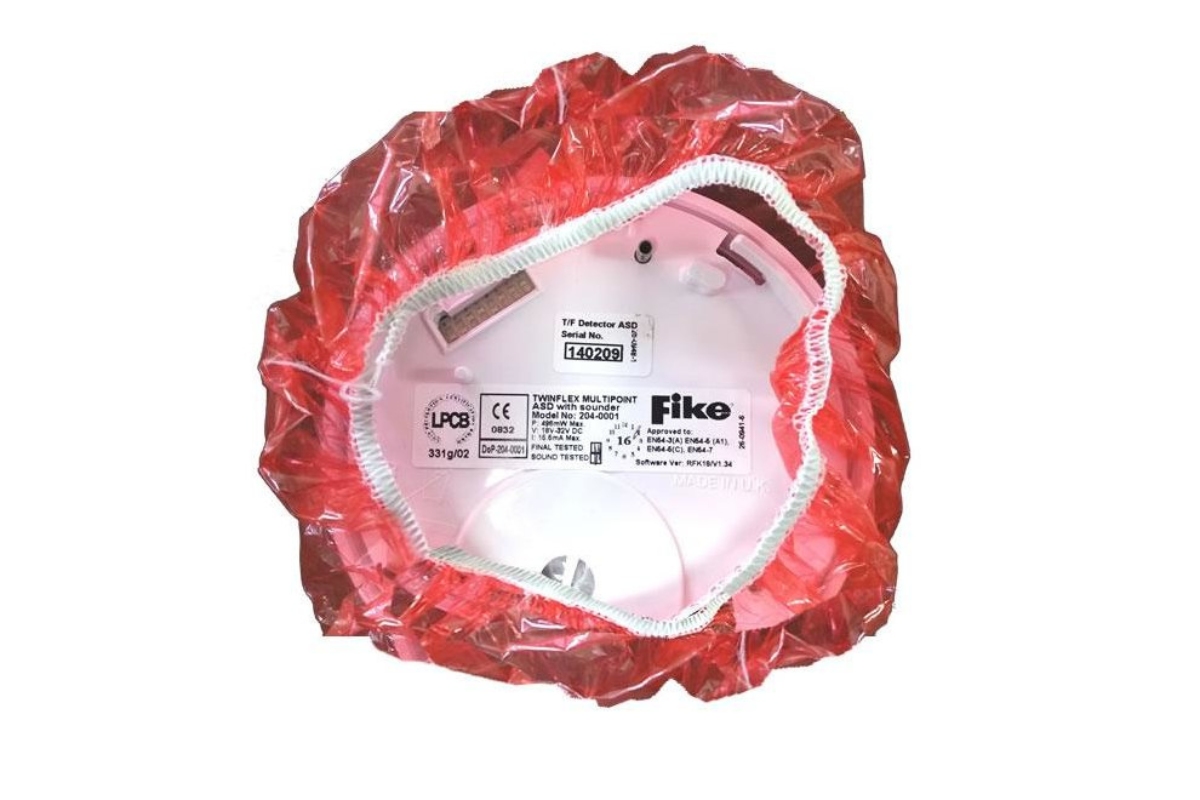
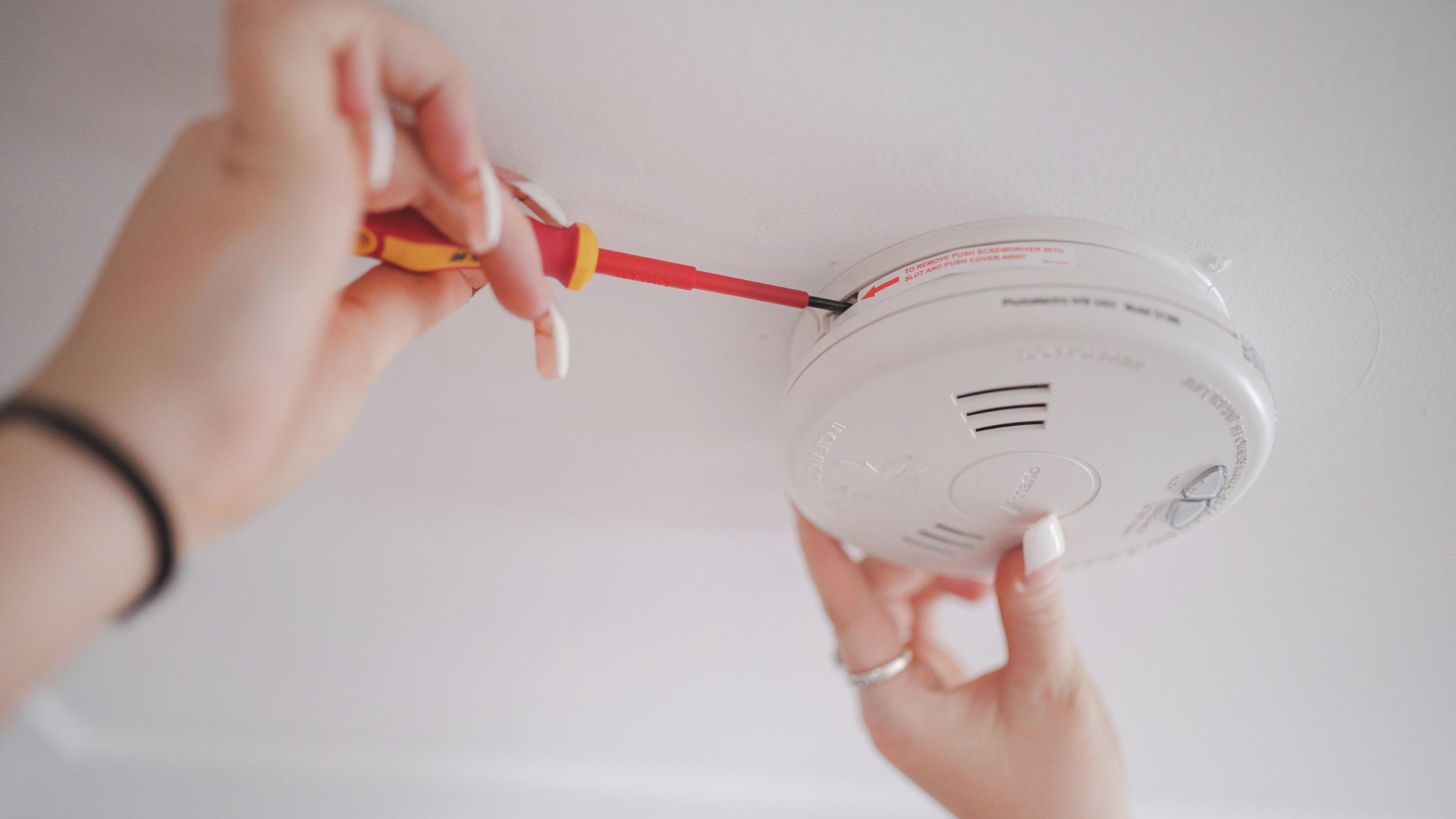
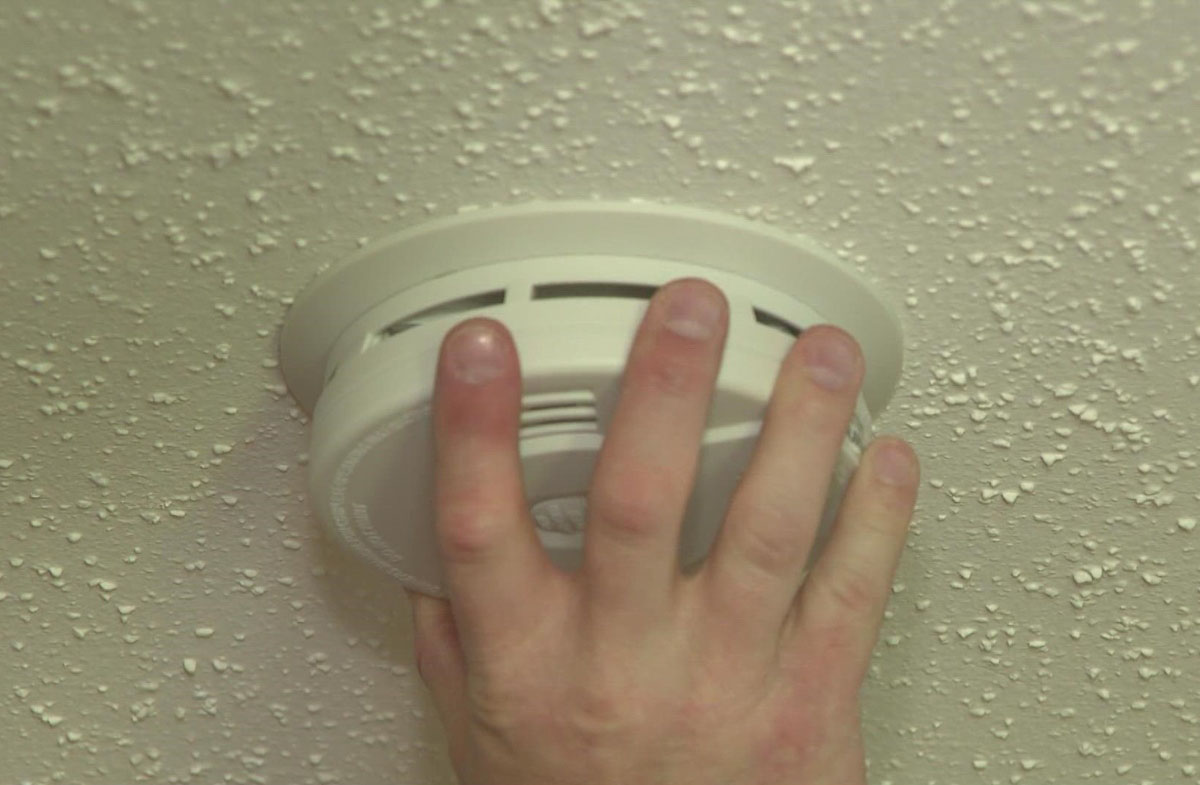
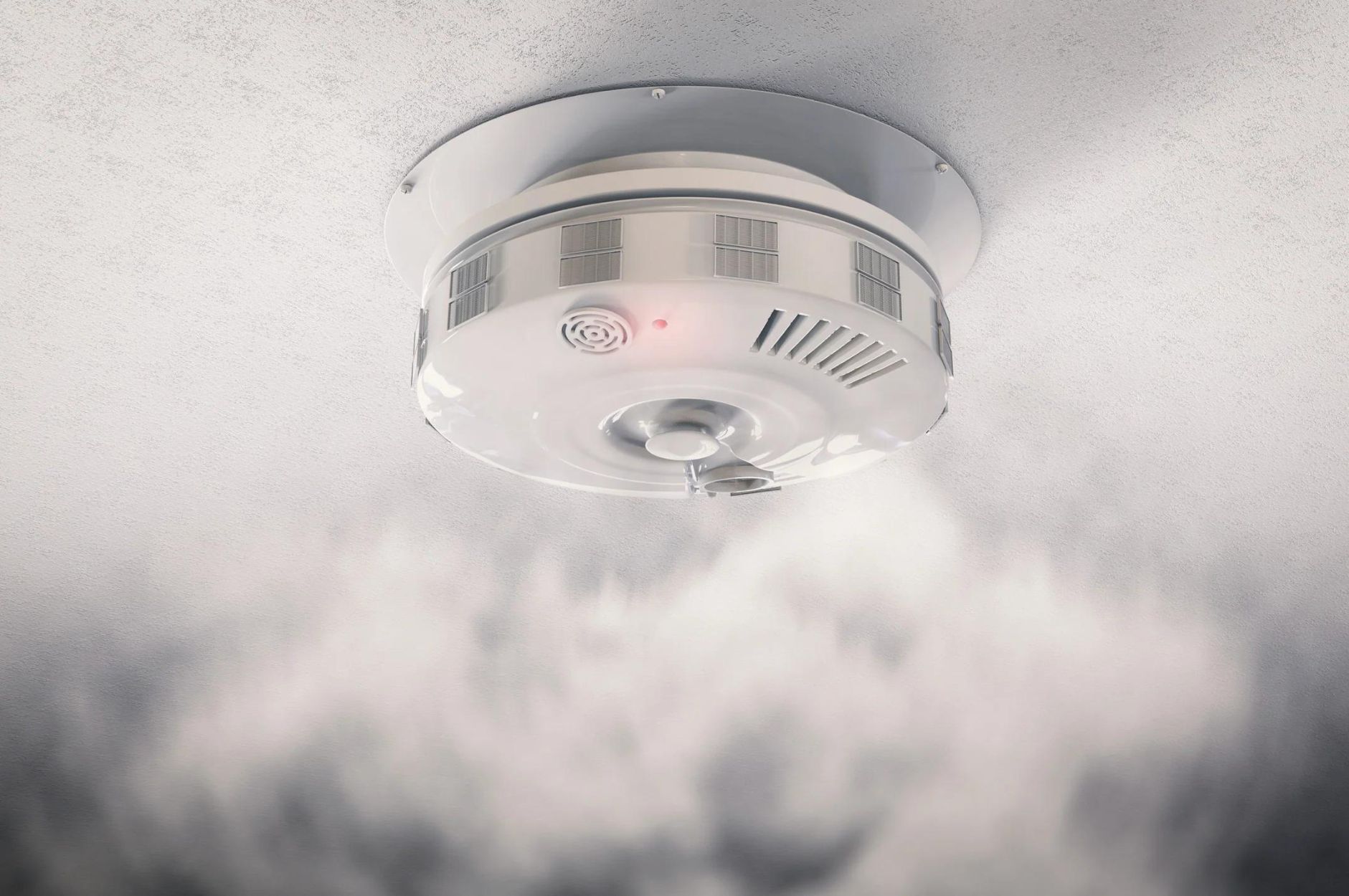
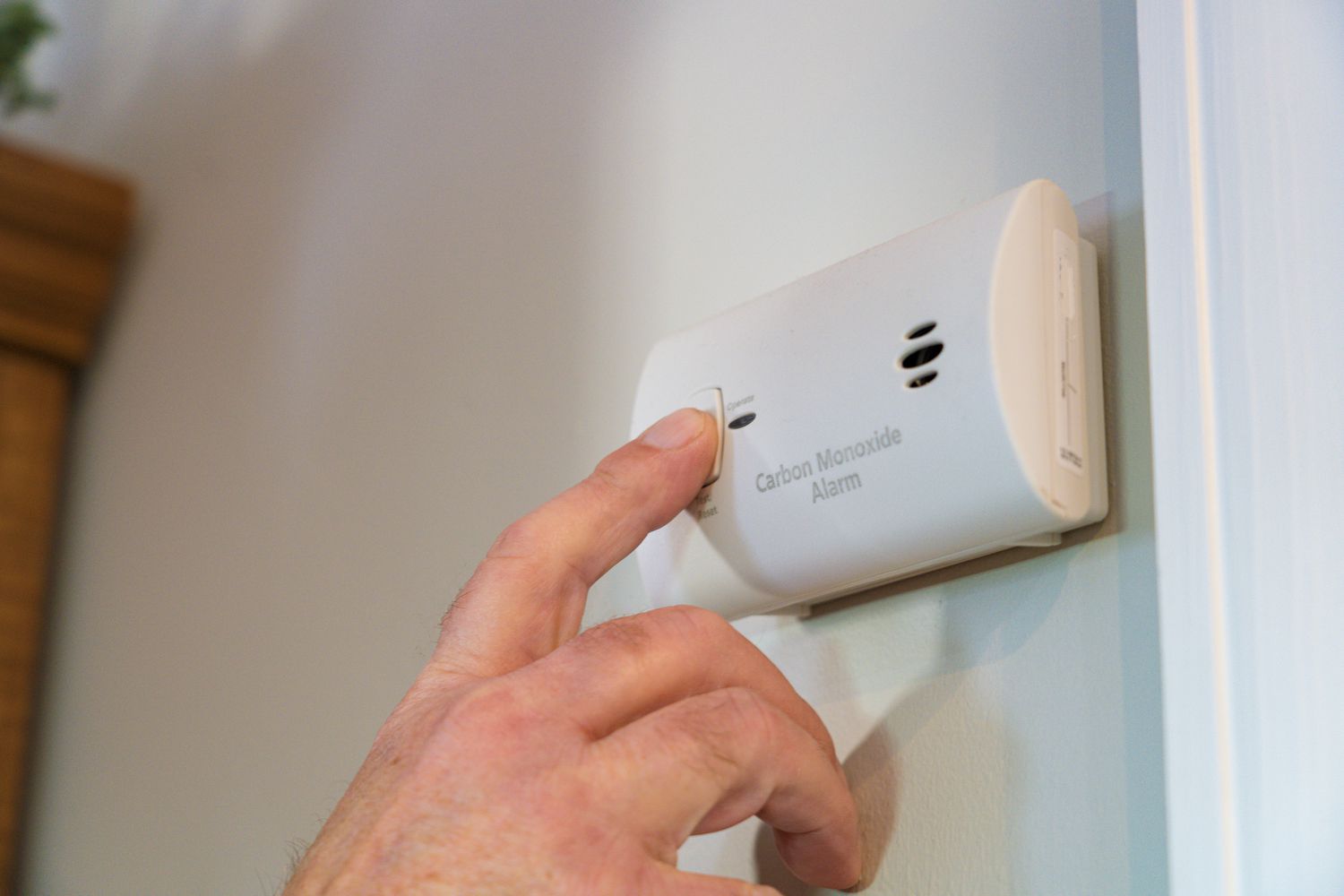
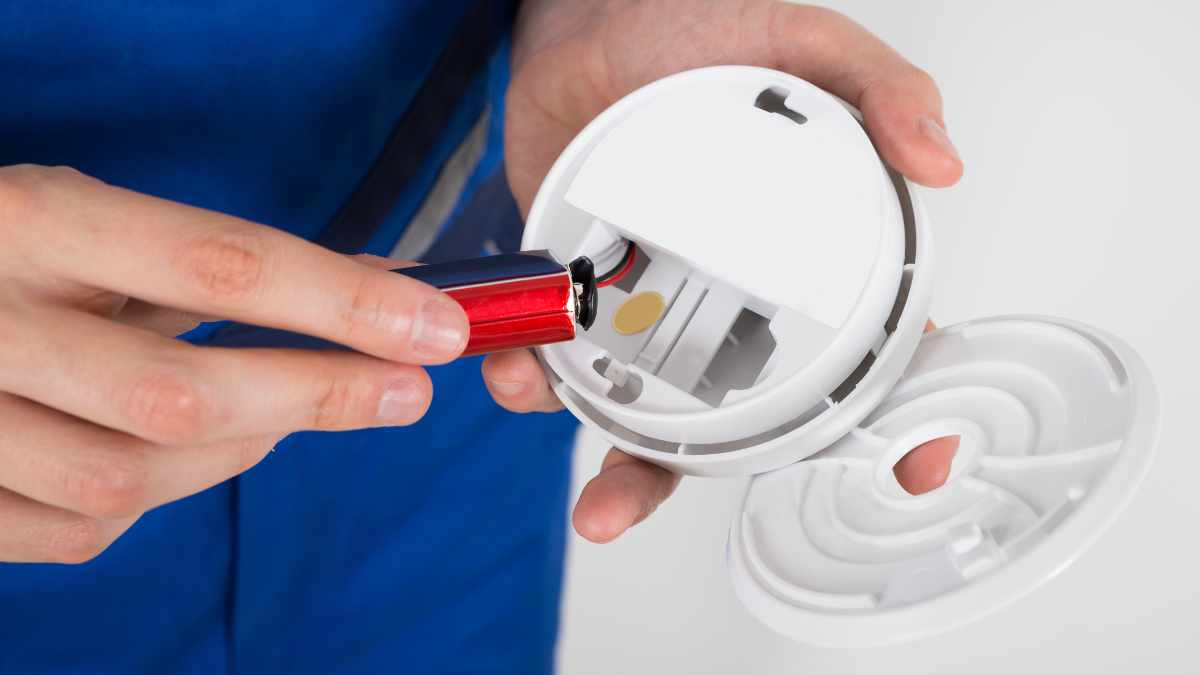
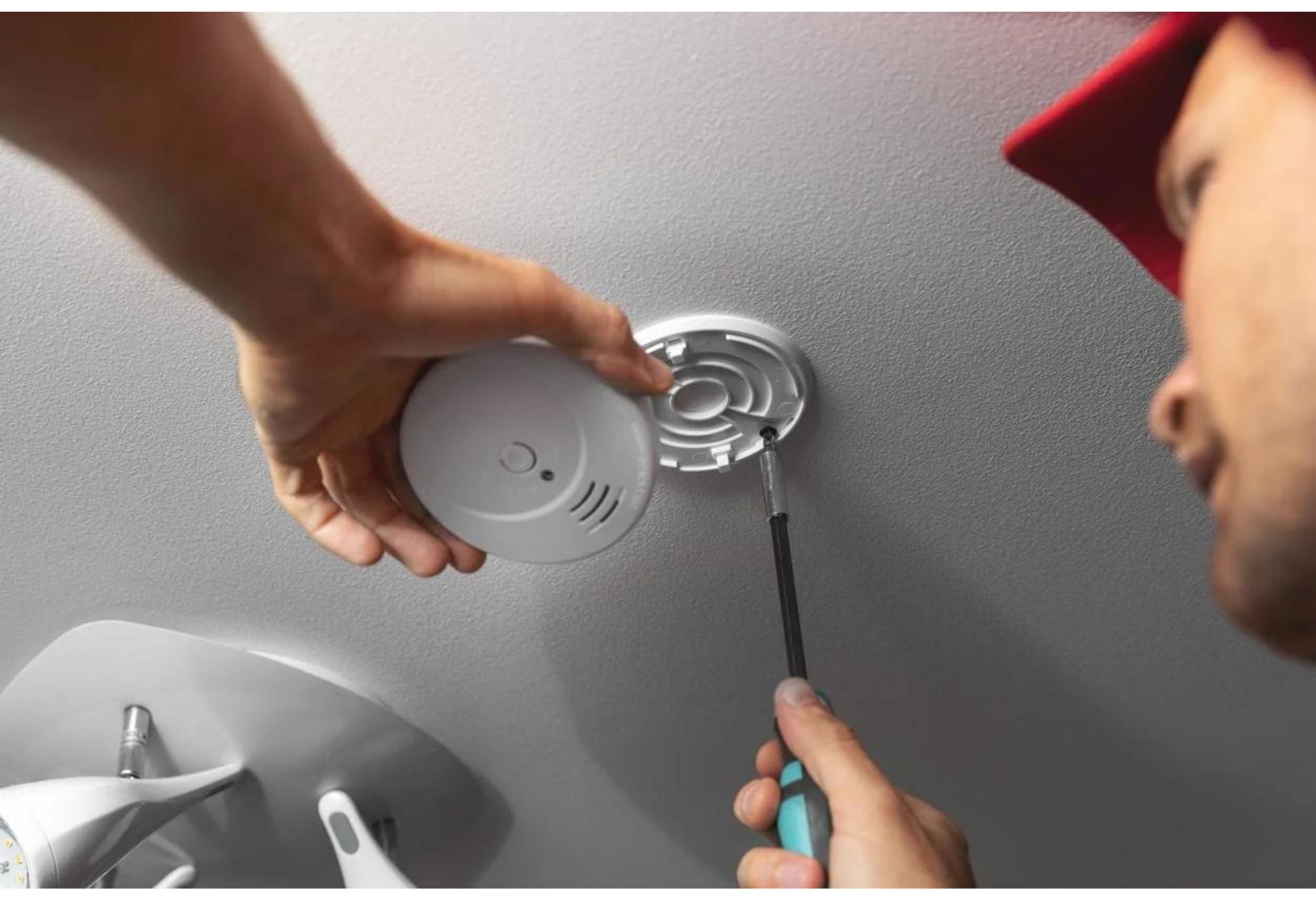
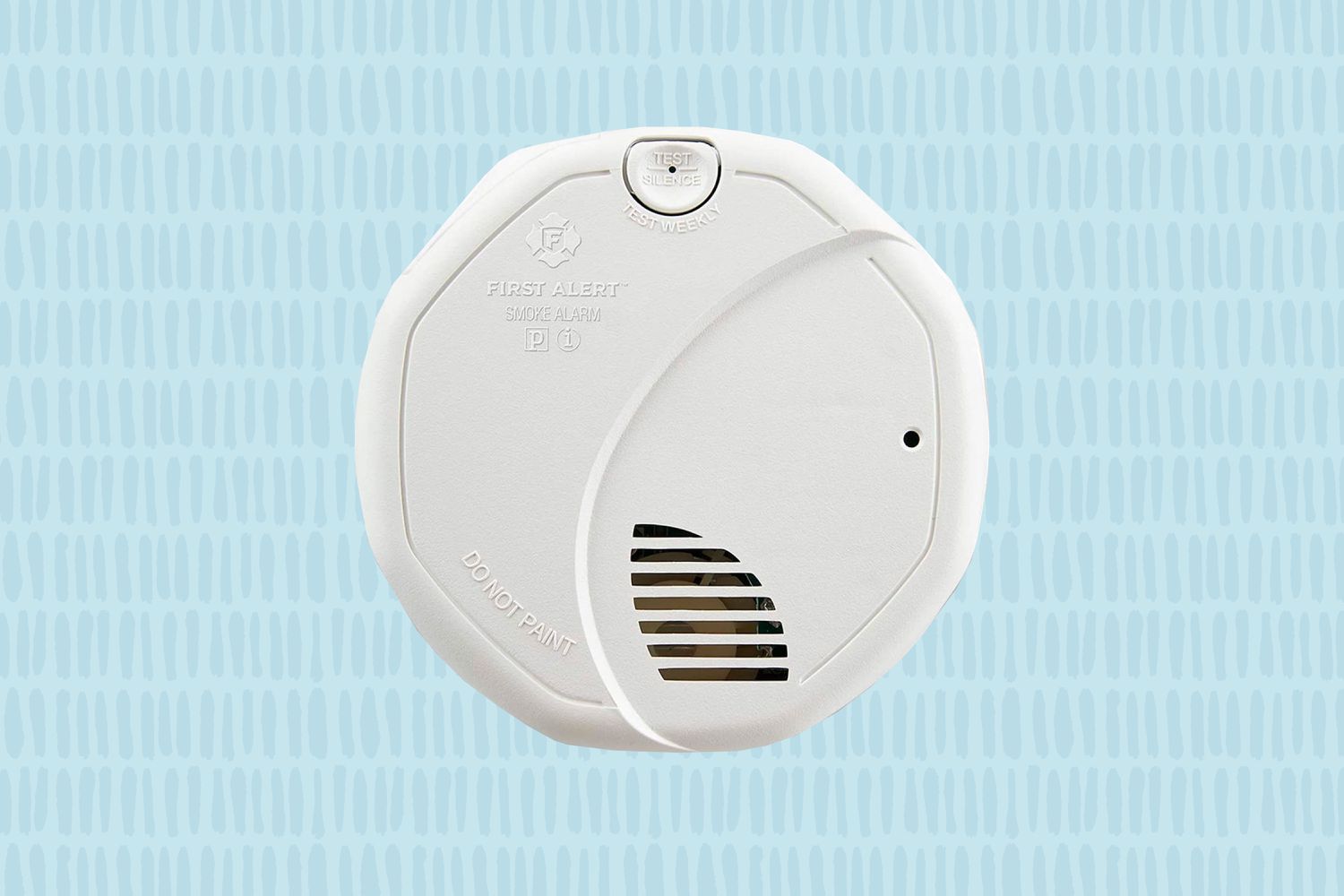
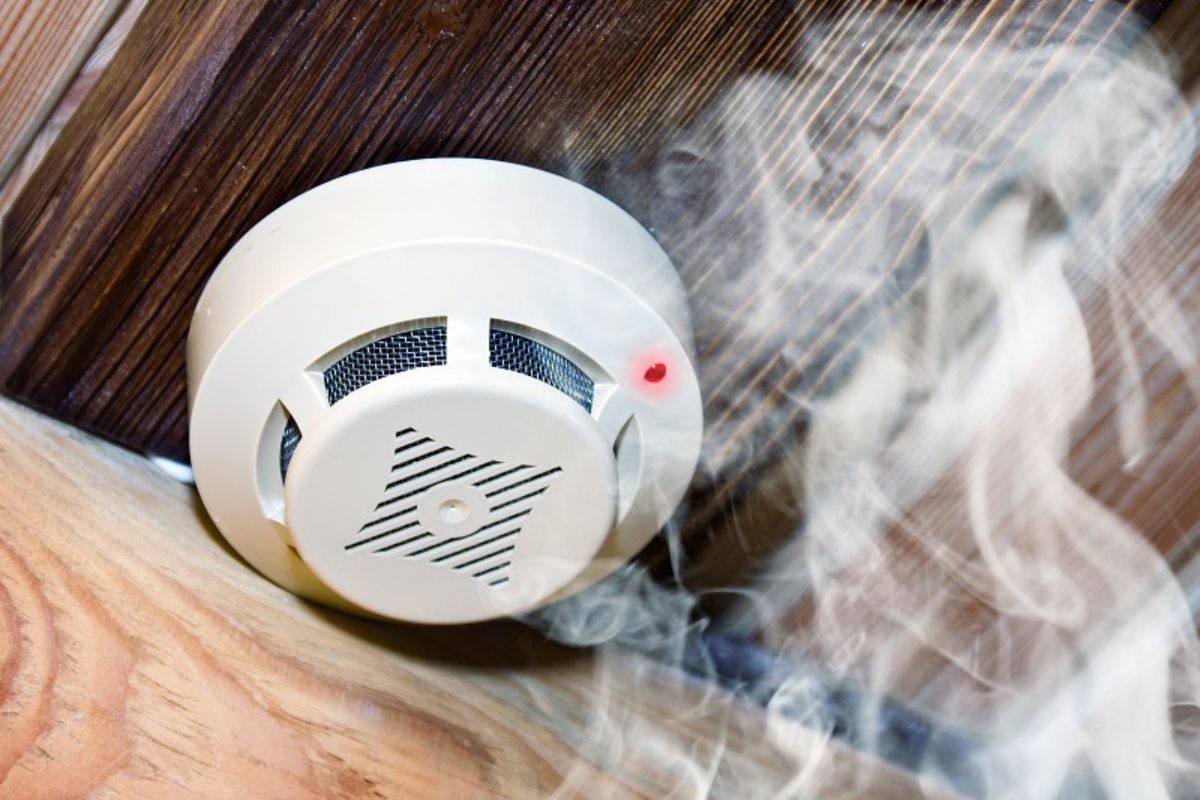
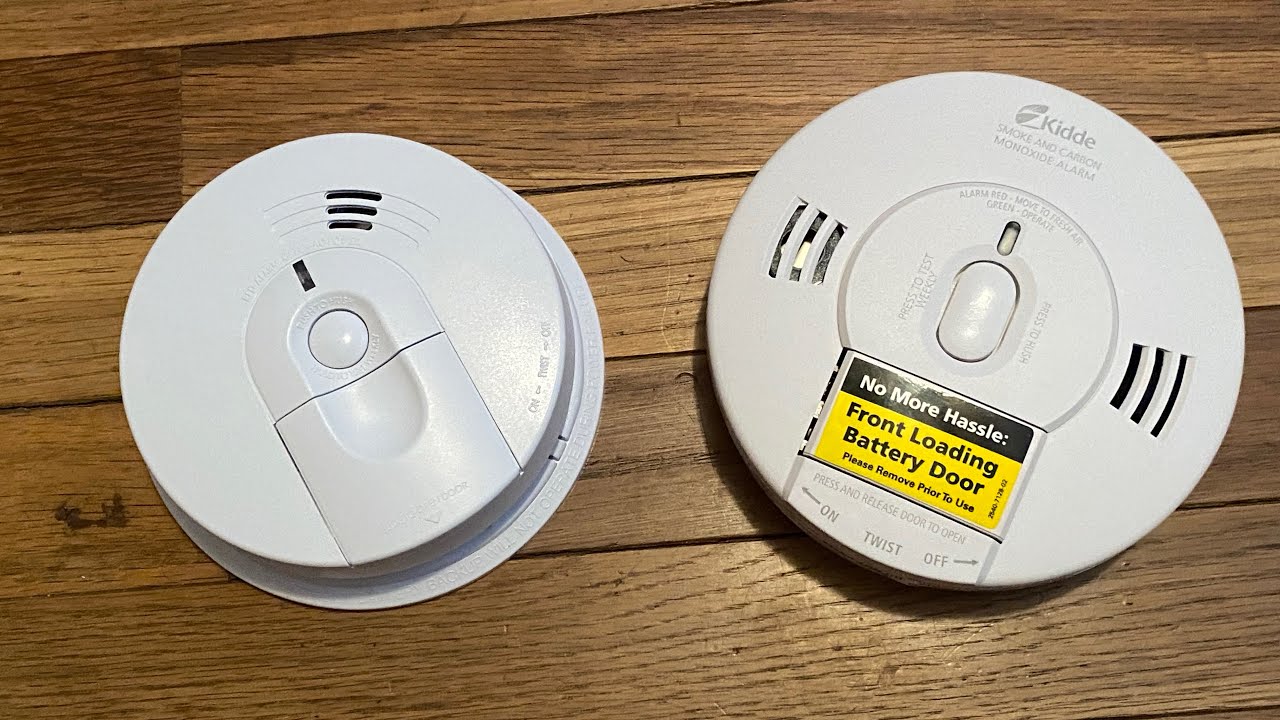
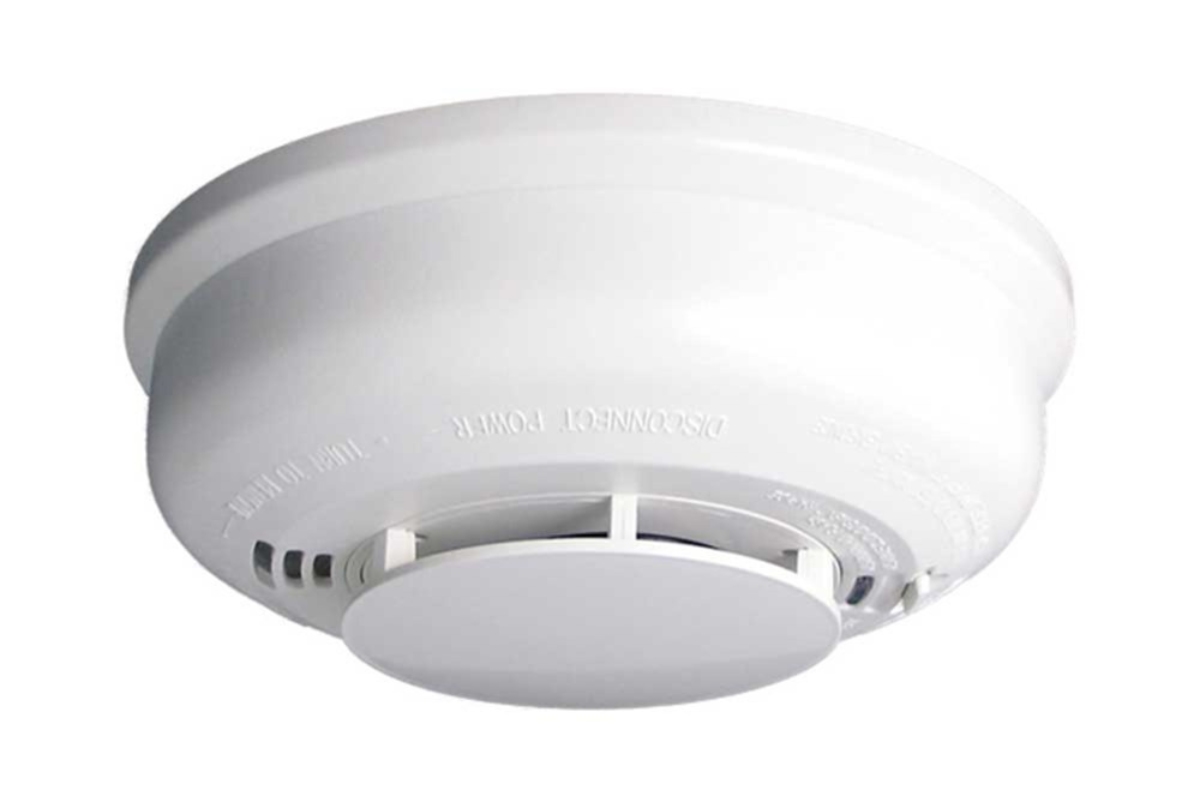
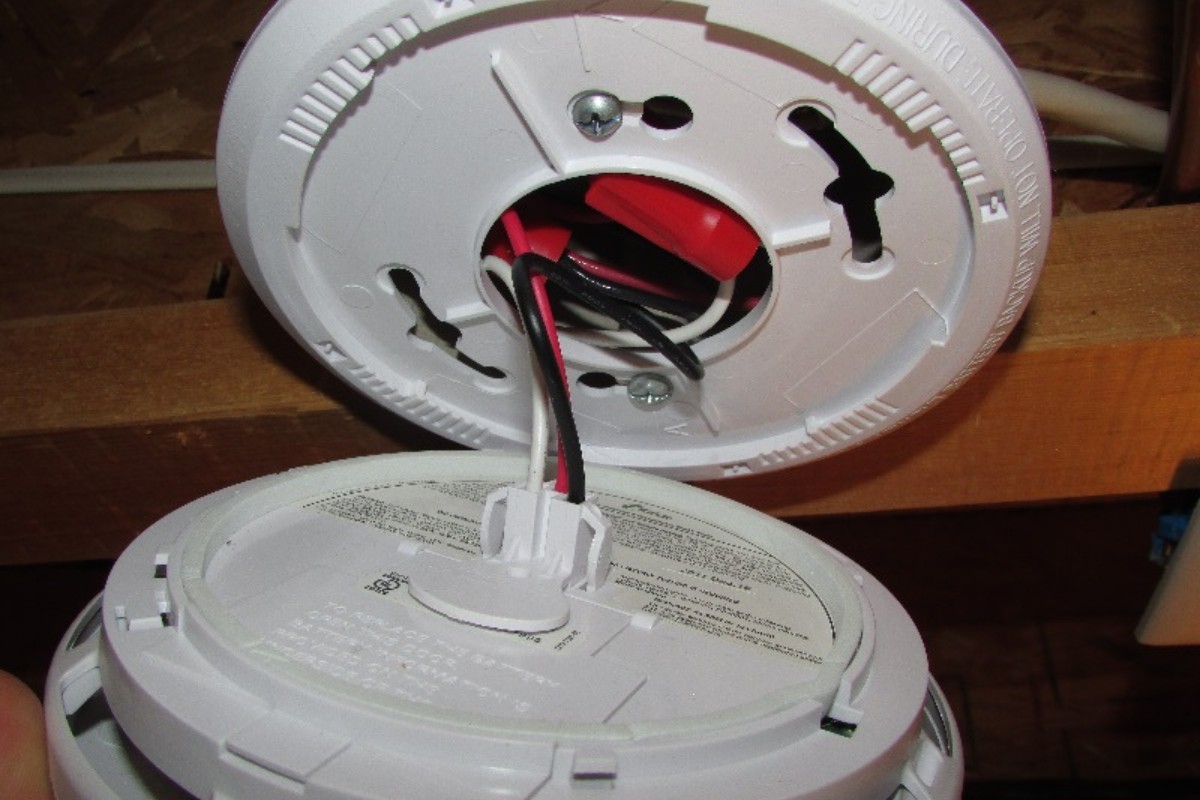
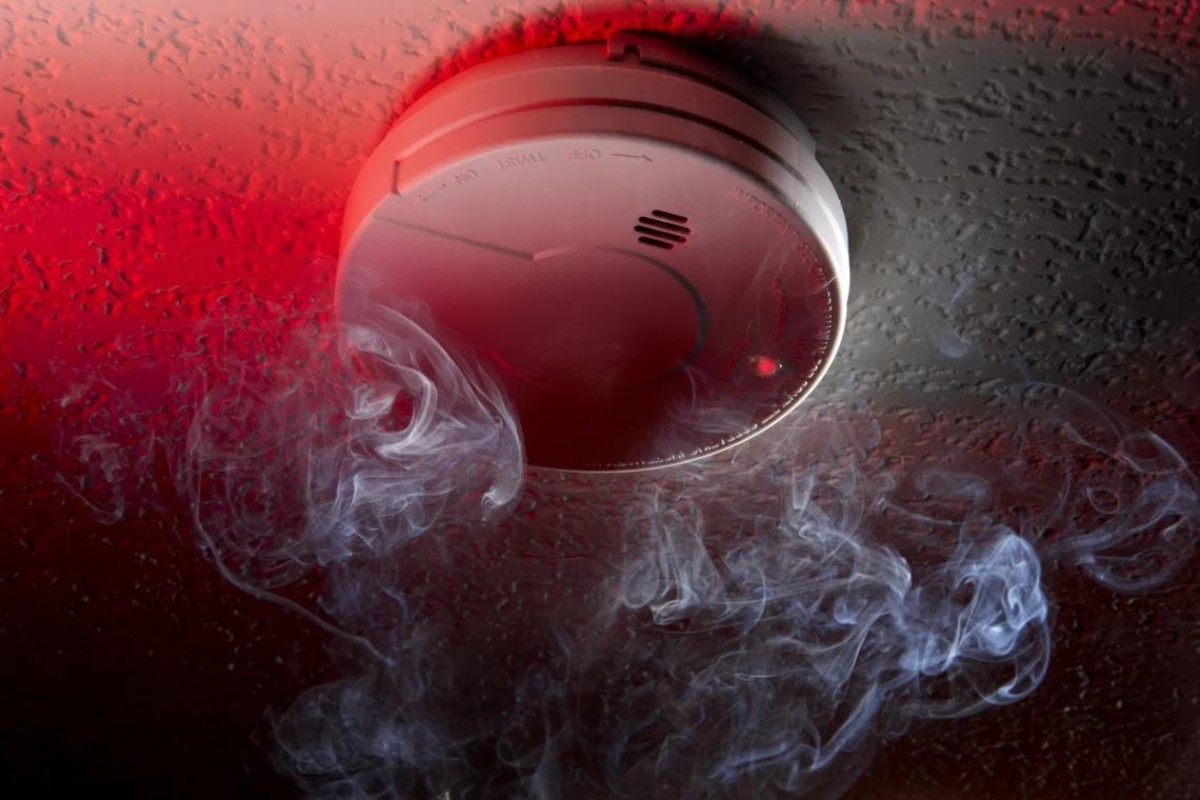

0 thoughts on “How To Test A Smoke Detector”